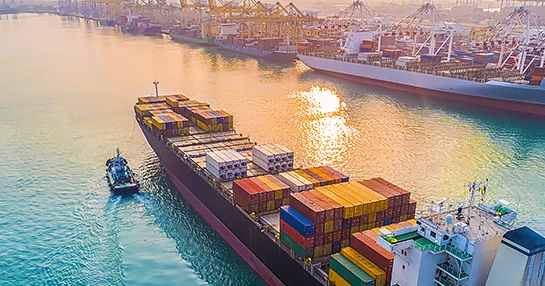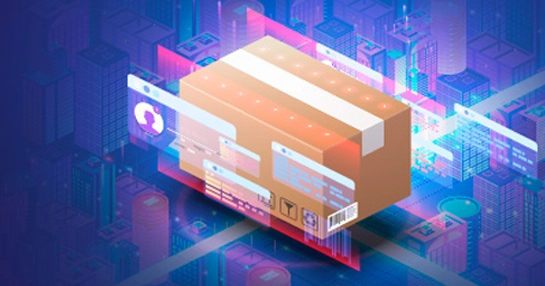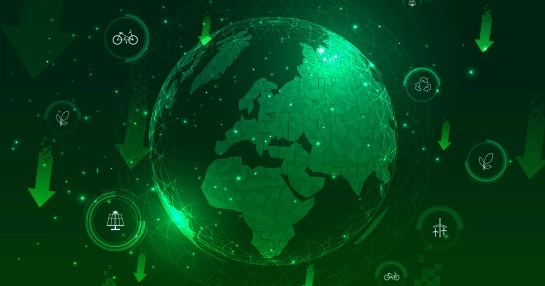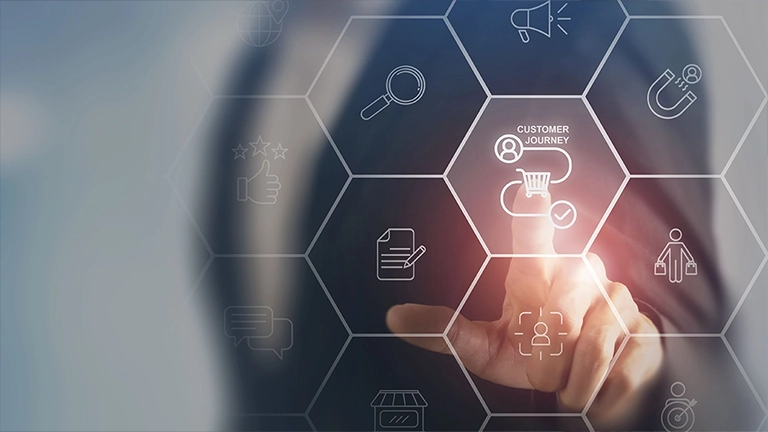Businesses constantly face challenges in managing their procurement processes — including disjointed workflows, erroneous data entry, low visibility into operations, and stretched payment cycles. These issues not only upset operational efficiency but also translate into substantial financial losses and strain in supplier relationships.
Procure to pay provides a strategic solution to the aforementioned challenges and much more. P2P enhances and simplifies procurement activities from requisition to payment, reducing costs and boosting supplier relationships.
What is Procure To Pay or P2P?
The procure-to-pay covers activities performed to obtain and manage materials required for manufacturing a product or providing a service. It involves the transactional flow of data with the supplier from the point of order right up to the point of fulfillment of the actual order and payment for the product or service.
The P2P process essentially focuses on optimizing procurement practices to achieve heightened efficiency, cost savings as well as compliance. With enhancements — such as cutting manual tasks, minimizing errors and providing real-time visibility into procurement activities — the procure-to-pay process empowers businesses to rationalize operations and make informed decisions.
Procure-to-Pay (P2P) streamlines the payment process that combines the purchasing and payables departments. It is part of the broader procurement management process and comprises five steps: deciding what to buy, ensuring everything is in order, getting it, checking it over, and paying for it.
Procuring goods and services and making payments typically involve several procedures at most firms. Requests for quotations or authorized product catalogs may be necessary during the procurement.
The entirety of the P2P process is broken down into several smaller processes, each of which takes place in a distinct area of the organization and involves a variety of participants. This can add extra steps and confusion, mainly if the procedure is entirely paper-based and manual.
Automating this process results in cost savings and improved processing efficiency by removing labor-intensive manual procedures prone to error and taking up unnecessary amounts of time. Total financial data capture and superior supply chain visibility are possible with fully automated procurement and payables operations.
Automatic processes allow for more efficient and convenient electronic communication with vendors. Connecting to each supplier, from the largest to the smallest, is made possible when various approaches to interact and trade data and documents are used. Furthermore, automation improves supplier relationships, collaboration, and also boosts the proportion of invoices paid on time.
Importance of Procure To Pay
The procure-to-pay (P2P) process is critical for managing procurement and payments efficiently. Implementing procure-to-pay automation delivers major benefits including increased control, cost savings, enhanced efficiency, better supplier relationships, improved visibility, and higher productivity.
Tightly integrating and automating procurement and payment processes enable P2P systems to deliver significant strategic and financial benefits. Enterprises gain oversight, compliance, savings and efficiency needed to optimize procurement operations.
Key Steps in the Procure-To-Pay Process
There are several steps in the procure-to-pay process that enable seamless flow of activities from initial purchase requisition to the final payment. The typical steps include:
Purchase Requisition
The process starts with identifying the need for goods or services and submitting the purchase requisition. This document details the required items — including quantity, specifications, and delivery timelines. The requisition undergoes an approval process per the enterprise’s procurement policies.
Purchase Order Creation
Once the requisition is approved, a purchase order (PO) is generated and dispatched to the supplier. This PO (which outlines all the agreed-upon terms) is a formal agreement between the buyer and the supplier.
Supplier Acknowledgment and Goods Receipt
The supplier acknowledges the PO receipt and confirms the capacity to fulfill the order as specified. When the goods or services are delivered, the receiving department verifies the shipment against the PO to ensure accuracy in quantity and quality. Discrepancies, if any, are documented and resolved before moving to the next step.
Invoice Verification
The supplier submits an invoice based on the delivered goods or services. The accounts payable department verifies the invoice against the purchase order and goods receipt to confirm that all details align. This three-way matching serves as a critical control mechanism to prevent errors and mitigate fraud risks.
Payment Authorization and Execution
After the invoice is verified and approved, payment is authorized per agreed-upon terms and the funds transfer is completed. Advanced P2P systems often automate this payment process to ensure timely and accurate disbursements, ensuring better supplier relationships.
Comprehensive Benefits of Procure To Pay
The P2P process significantly enhances procurement efficiency by automating repetitive tasks, minimizing manual intervention, and improving overall workflow.
Automation of Routine Tasks
Manual procurement tasks — such as creating purchase orders, matching invoices, and processing payments — are time-consuming and susceptible to errors. P2P automation eliminates these manual steps by simplifying the entire workflow, which in turn enables procurement professionals to concentrate on strategic initiatives.
Enhanced Visibility and Control
P2P systems provide real-time visibility into the entire procurement process — from requisition to payment. This enables procurement teams to monitor order statuses, identify bottlenecks and make data-driven decisions. These optimizations also translate into higher compliance with procurement policies.
Improved Supplier Relationships
Timely and accurate payments are essential for nurturing strong supplier relationships. P2P systems facilitate a streamlined payment process, ensuring that suppliers receive payments on time and per terms and conditions. This not only strengthens supplier partnerships but also enhances the organization’s reputation as a reliable business partner.
Data-Driven Insights
P2P systems improve spend analysis, supplier performance, and compliance metrics — and these improvements can be leveraged to identify trends, negotiate better terms with suppliers, and drive continuous process improvements.
Cost Savings and Improved Efficiency
Advanced procurement software systems with automated workflows enable significant cost savings — including reduced manual intervention that leads to fewer errors, lower processing costs and improved efficiency. P2P systems also help organizations to capitalize on early payment discounts and optimize cash flow management.
Key Challenges in P2P Implementation
Despite its benefits, enterprises can face several challenges in procure-to-pay process implementation, including:
Integration Complexities
Many organizations struggle with disjointed systems where procurement and accounts payable operate in silos. Integrating these functions requires careful planning, technology alignment, and organizational change management.
Data Management Issues
Poor data quality, inconsistent coding, and duplicate supplier records can undermine P2P effectiveness. Establishing data governance frameworks is essential for maintaining information integrity.
Process Standardization
Varying practices across departments or geographic locations complicate efforts to standardize P2P processes. Creating unified procedures while accommodating legitimate business variances remains a delicate balancing act.
Stakeholder Resistance
Changes to established procurement and payment methods often face resistance from employees accustomed to traditional practices. Overcoming this resistance requires comprehensive change management strategies.
Technology Limitations
Legacy systems may lack the capabilities needed for modern P2P processes. Organizations must evaluate whether to upgrade existing solutions or implement new platforms.
Procure to Pay Automation
Procure to Pay (P2P) automation represents a transformative approach to streamlining the end-to-end procurement process, from initial purchase requisition to final payment. By digitizing and automating these workflows, organizations can achieve significant improvements in efficiency, accuracy, and strategic value.
At its core, P2P automation eliminates manual touchpoints across the procurement lifecycle. Modern P2P solutions integrate requisitioning, purchase order management, receiving, invoice processing, and payment execution into a cohesive digital workflow. This integration reduces processing times from weeks to days or even hours, allowing procurement teams to focus on strategic activities rather than administrative tasks.
The benefits of procure-to-pay automation extend beyond mere efficiency gains. P2P automation provides enhanced visibility across the entire procurement process, enabling real-time tracking of spending, commitments, and supplier performance. This transparency helps organizations identify cost-saving opportunities, negotiate better terms, and manage cash flow more effectively.
Data accuracy also improves substantially with automation. By eliminating manual data entry and implementing validation rules, P2P systems reduce errors that can lead to duplicate payments, incorrect orders, or compliance issues. The resulting clean data creates a foundation for meaningful procure-to-pay analytics as well as informed decision-making.
For suppliers, P2P automation offers accelerated payment cycles, improved communication, and reduced administrative burden. These benefits strengthen supplier relationships and can potentially lead to preferential pricing or terms.
Implementation of P2P automation typically requires careful planning and change management. Organizations must map existing processes, identify improvement opportunities, configure systems appropriately, and ensure user adoption through effective training and support.
As technology evolves, P2P automation continues to advance with artificial intelligence and machine learning capabilities that can predict spending patterns, recommend optimal suppliers, automatically match complex invoices, and identify potential fraud or compliance risks.
For organizations seeking to modernize their procurement function, P2P automation represents not just a technological upgrade but a strategic investment that can deliver substantial returns through improved efficiency, enhanced controls, and deeper procurement insights.
How GEP's AI-driven Procure-To-Pay Automation Solution Can Help
P2P software or procure-to-pay software focuses on automating the entire P2P cycle by allowing efficient control into each stage of the process. Procure-to-pay software enables fluid flow of data from the purchasing department to the account payables department and vice versa. Modern day P2P software systems like GEP SMARTTM can be integrated with enterprise ERP systems to extract invoice and payment information and provide notifications to relevant users on pending and completed processes.
The procure-to-pay process is key to maximizing the efficiency of the procurement process, offering a comprehensive strategy to manage the entire procurement lifecycle. Further, automating and streamlining procurement activities effectively address key pain points, enhance efficiency, and drive superior business outcomes.
GEP's AI-driven P2P automation solution empowers enterprises to overcome the challenges associated with traditional procurement processes. With advanced technology, real-time analytics, and seamless integration, the P2P platform provides a robust solution for strategic procurement initiatives and adds substantial value.
Future Outlook for Procure To Pay
The procure-to-pay process represents more than a functional necessity; it embodies a strategic opportunity to transform operational efficiency, financial performance, and supplier relationships. By embracing modern technologies, implementing best practices, and fostering a culture of continuous improvement, organizations can elevate their P2P capabilities from transactional processing to strategic value creation.
Excellence in P2P has become a competitive differentiator, with forward-thinking organizations recognizing that optimizing the journey from requisition to payment not only reduces costs and improves compliance but also enhances agility and supports sustainable growth.
As technology continues to evolve and business expectations heighten, the pursuit of P2P excellence becomes an ongoing journey rather than a destination — one that rewards organizations with increased efficiency, stronger supplier relationships, and superior financial performance.











